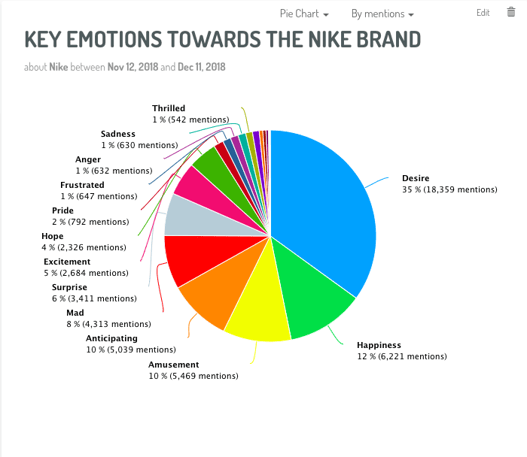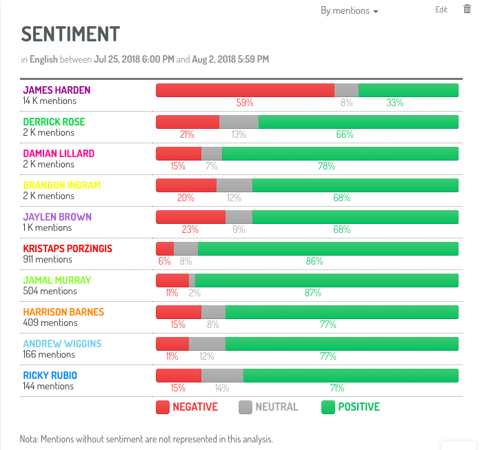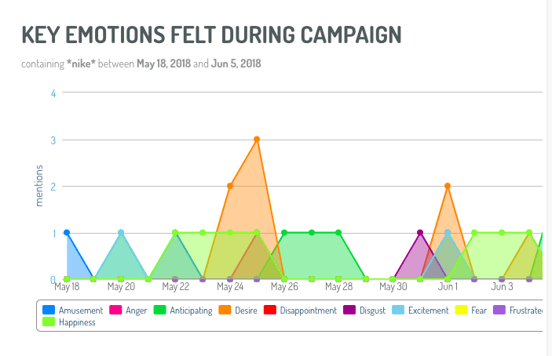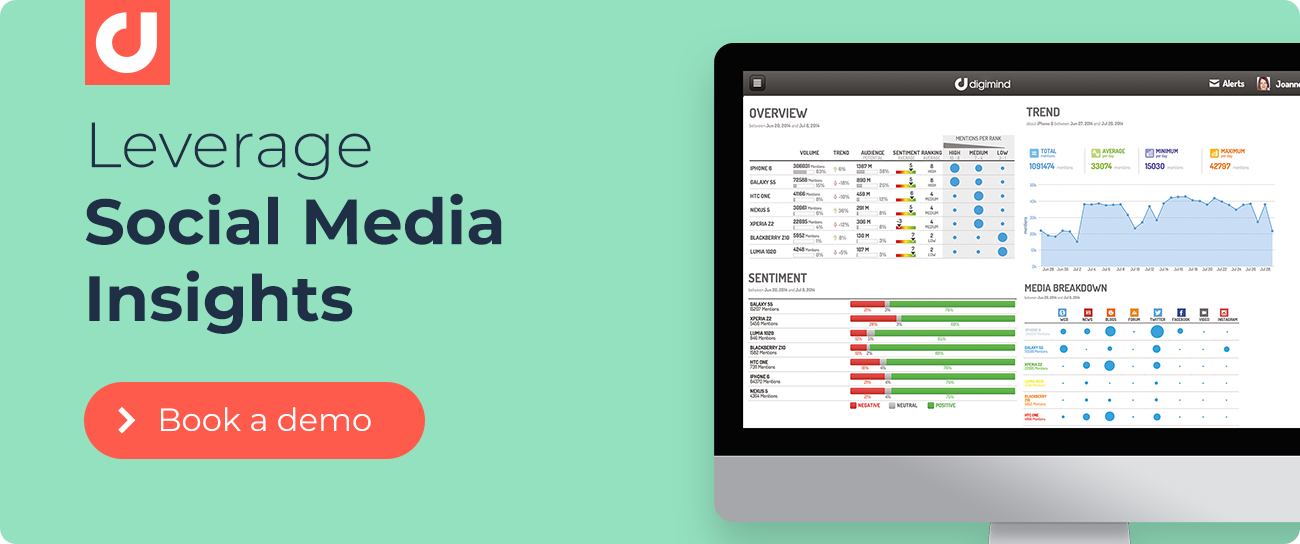What are the 3 Types of Social Listening?
Digital marketing has improved over time, and getting to engage with your audience has gotten even better. Gone are the days of simply posting content and expecting users to be ecstatic about your post or engage frantically. Now, brands have to pay more attention to their audience, what their needs are, and what they say.
This is where social media listening comes into play.
To get the best out of your social media strategies and campaigns, you have to really listen to your audience. The key to effectively cracking any niche is effective social listening, just as you would do when trying to understand a person in a face-to-face conversation.
To begin with, we need to define what social listening is and put it into context.
What is Social Listening?
Social listening is about tracking, gathering, and analyzing data from online conversations about the brand, niche, and other related aspects of the industry. Not to be confused with social media monitoring, social listening goes beyond the superficial metrics provided by social media platforms.
While these metrics are good and important, they do not give you deep insights into the thoughts and actions of customers.
The key difference between social listening and monitoring is that social listening helps you understand social media sentiments. These are the feelings and moods behind most actions taken by social media users. For example, social listening helps you better understand what prompts a user to follow a brand or the related industry hashtag.
Social media monitoring provides you with the facts and numbers derived from metrics like how many mentions you got within the last few days. While these numbers are good and necessary, they do not tell you why you got mentioned within the last few days and whether it was good or bad.
Social Listening Goes Beyond
With social listening, you go beyond facts and numbers, diving deeper into truly understanding what it is your customers want from you. In the case of getting a lot of mentions within days, social listening will help you understand if those mentions are good or bad and you will need a PR statement to mitigate the damage if the scenario doesn’t look pleasant. You are more equipped to make better decisions through social listening that can prevent a potential catastrophe for your business or put you on the right path for better success.
Social Listening Tools
Social listening tools are necessary for gaining better insights and understanding of the features you are tracking. Unlike social monitoring, you will need external tools to dig deep and uncover your desired results from the data provided. Data for social monitoring can be gotten through the analytics service provided by the social media platforms and other external tools as well. However, these tools only give you the numbers as mentioned earlier. There can be no effective listening without third-party tools, and this is because the focus is not solely on your business alone. Social listening also involves listening to conversations about your competitors, what customers are saying about them, changes in your industry and how these changes affect you, and for other conversations relevant to your niche.
All this information can not be gotten from metrics provided through analytics tools. The ability and scope of these analytics tools are largely limited to providing just data. On the other hand, third-party social listening tools are integrated and designed to not only collect superficial data but also provide deeper insights from this data. It allows you to segment your audience based on true and relatable personas. The advantage of this is that you can tailor your social media strategy to fit these audience personas and not just a general range.
Social listening is not done in just one way. There are a few steps to social listening and different types of social listening. Understanding the different types of social listening is crucial in getting better insights and making sound choices. So, what are the different types of social listening?
So, what are the different types of social listening?
Basic Social Listening
The first kind of listening is basic listening. This involves listening to and learning from your own audience. These are the people who follow you on social media platforms and engage with your content and page. This includes looking at previous posts surrounding your brand’s hashtag, handles, and page.
For example, you may ask a question based on a certain topic across your social media channels, then listen to the conversations that are being sparked by this question. This gives you an idea of how people react to certain topics and how they are likely to engage in which content is based on this topic.

This level of listening doesn’t provide deep audience insights. Your desire is to observe reactions to certain topics. Since all the users that engage with your content can’t be scrutinized, the data only helps you know what is going on at a given time. It does not help you classify and separate your audience into segments for better understanding.
Basic listening can be done with third-party listening tools or basic analytics tools provided by social media platforms. Since the data does not go in-depth into the details, it is easy to get and analyze. This type of listening is still very different from social media monitoring majorly focusing on the numbers from the data.
Deep Social Listening
The scope of deep listening is wider and involves tracking a wide range of social media posts about a specific topic, and not just the posts directed at your brand or related to the content on your page. This is an advanced form of listening that helps you discover hundreds, and potentially thousands of conversations about a particular topic. This listening method is broad and covers a larger pool of data than basic listening or social media monitoring.
For example, say you want to track opinions about a basketball, you will need to track all the available data on this topic from keywords to posts, hashtags, and everything else. This is why we mentioned that the use of a third-party tool will make your social listening more effective. The benefit of these tools is they let you track keywords and filter data based on your specific needs like content type, engagement, and sentiment.

This type of listening provides you with answers to certain kinds of questions such as the relevance of a particular topic, how important it is to your audience, and the kind of tone to use with your audience-based sentiments observed towards them. You get a more comprehensive view of your target audience and contribute to the validation of your audience personas.
Combined Social Listening
Combined listening involves social media monitoring and deep social listening. Since social media monitoring provides you with numbers and data, this could be seen as the starting point to better help you understand your audience. The application of social monitoring gives you a head start and allows you to know what insights you need for your business from the metrics obtained.
The goal is to get deep insights into who your customers are as people, why they feel a certain way, and what prompts them to make certain decisions. The combination of both monitoring and listening provides a powerful tool that can be used to understand your audience better as people.

To get accurate results and better understand your insights, you will need third-party tools. Because you are combining both monitoring and listening, you will need tools that will help you analyze and dissect the huge amount of data that will be collected. Proper analysis of the data is crucial to understanding what it is your customers need and what, and how you can help satisfy them. At the end of the day, if you are unable to comprehend the data, then it will be of no use to your business.
Conclusion
Understanding what makes customers tick is the prime goal for most businesses, and social media listening is the way businesses are going about this. This method of consumer understanding goes beyond the face value of data gotten through various tools. The essence of a business is to provide solutions to people’s wants and needs while finding ways to serve them better. A simple way to do this is by simply understanding their behaviors online and what motivates them, among other facts. You can get more value when you dig deeper into their social media identities consistently, to guide future campaigns that may be targeted at them. People respond better when you interact with them on a more personal level, and this can only happen when you truly understand your audience.
You will be a few steps ahead of the competition when you know just how to cater to the needs of your customers. Social listening also helps you catch negative sentiments about your business and mitigate potential PR crises that could impact your business negatively. With social listening, you get to save time and money while yielding better returns on your social media marketing efforts. You are put at a better advantage to keep your marketing strategies personal and relevant to your audience.

